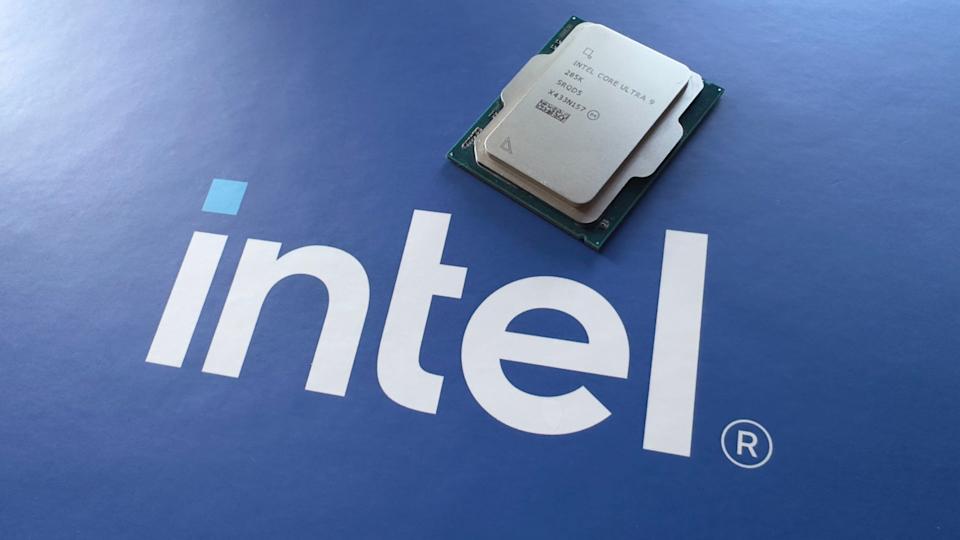The recent controversy surrounding Intel’s CEO Lip-Bu Tan has triggered notable market reactions. Former President Donald Trump’s public call for Tan’s immediate resignation, due to his past ties with Chinese firms, intensified political scrutiny. This announcement followed a formal letter from Senator Tom Cotton highlighting potential national security risks.
Within hours, Intel shares dropped by up to 4% in premarket trading, with volatility continuing through the trading day. Investors responded to what they view as a developing governance crisis, not just a political statement. Even though Tan had only been in the role since March 2025, his leadership was already under pressure due to Intel’s multi-year underperformance and ongoing restructuring.
The sharp reaction from markets suggests investors are wary of external political influence on executive leadership, particularly in strategically sensitive industries like semiconductors. With Intel receiving federal support under the CHIPS Act, any perception of compromised leadership can threaten future funding, partnerships, and shareholder trust.
Market Performance Reflects Deep Structural Challenges at Intel
Intel’s stock movement isn’t just about headlines. The company’s financial trajectory over the past few years has raised consistent red flags. Revenues fell from $79 billion in 2021 to just $53 billion by 2024. Its foundry business, once positioned as a competitive advantage, has been widely criticized for falling behind Taiwan’s TSMC and South Korea’s Samsung.
Lip-Bu Tan’s appointment was initially seen as a step toward revival, given his background in semiconductors and venture capital. However, his rapid cost-cutting strategies, including job reductions and facility closures, haven’t yet delivered results. Instead, they’ve created internal uncertainty, now amplified by external political pressure.
This incident highlights the layered risks Intel faces: competitive lag, political scrutiny, and internal upheaval. The near-term outlook will depend on how Intel’s board manages this leadership crisis and how swiftly it communicates a stable path forward to shareholders, government stakeholders, and the public.
Structural Struggles Overshadow Market Recovery
Even before this political episode, Intel was already battling deep-rooted challenges. The company’s transformation strategy, while bold on paper, has yet to produce results in the real world. Revenue has dropped from $79 billion in 2021 to just $53 billion in 2024. Intel has lost major ground to competitors like TSMC, AMD, and Nvidia—both in innovation cycles and investor sentiment. Market share in core segments such as data centers and client processors continues to erode.
Lip‑Bu Tan’s appointment earlier this year was initially seen as a reset. His background in chip design and venture capital offered promise—but in less than six months, he’s been forced to implement cost-cutting measures that signal urgency, not stability. The decision to slash 15% of the workforce, cancel certain fab expansions, and spin off legacy divisions speaks volumes. These are not forward-looking growth moves; they are damage-control tactics aimed at halting further decline.
From the outside, this looks like a company stuck between ambition and execution. Intel wants to lead in AI chips, foundry services, and advanced node manufacturing. But strategic vision only works when backed by operational momentum—and Intel is struggling to deliver that. Add a politically controversial CEO into the mix, and the leadership narrative becomes a liability. While Intel struggles with strategic clarity, some tech stocks are showing resilience, outperforming the sector’s median expectations despite macro pressures.
Investor Sentiment and the Path Forward
Markets react to uncertainty before they reward potential. Right now, Intel is signaling both. Short-term volatility will likely continue until the board either confirms its confidence in Tan or names a successor who satisfies both political and investor expectations. But beyond the headlines, the real issue is clarity. Stakeholders—from institutional investors to U.S. regulators—are demanding a clear message: who is in charge, and where is the company headed?
In the absence of strong leadership communication, the market will continue to price in risk. This puts more pressure on the next earnings call, strategic roadmap, and boardroom decisions in Q4. Intel can still turn this around—but not by simply reacting to news cycles. It will require proactive leadership, execution discipline, and a clear separation of business decisions from political theater.


